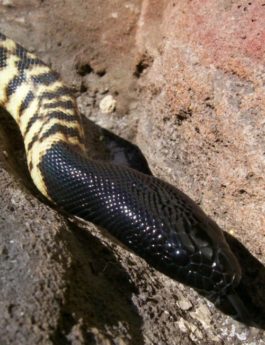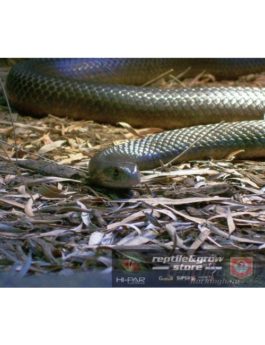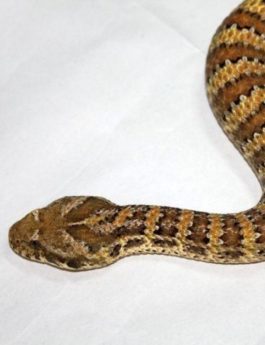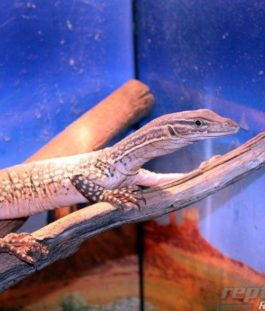The Gwardar is a latge slender agile snake, with glossy smooth scales. Adults can get up to 160cm . Colouration is highly variable, several distinct colour forms occur with a multitude of intergrades:
Hooded Form: Head and neck gloddy black, body grey, yellow, olive-green, pale-brown, orange-brown to rich reddish brown.
Banded Form: head and neck may be glossy black, pale to dakr brown. body with evenly spaced dark-brown to black bands, interspaced with silver-grey, pale brown, orange, yellow or red. bands do not extend fully onto the belly.
Pale-Headed Form: head pale-brown, grey or bright yellow. body any shade of grey, olive, brown or almost black. Often have a contrasting darker neck.
Uniform colour: Head, neck and body are uniformly coloured with grey, fawn, olive, through any shade of brown to almost black. Belly is cream, yellow, orange to almost red with dark blotches.
In spite of the vast colour variation among adults, juveniles (except when banded) are remarkably consistent in coolour, with a black head and neck, that is sometimes seperated by a pale band on the neck. Body light-brown to reddish-brown with dark specks forming a reticulated or herringbone pattern.
The Gwardar is diurnal and nocturnal, depending on the temperature. It is Generally found around farming areas where there in an abundance of mice and rats, it also feeds on lizards and occasionally other snakes. The Gwardar is an egg layer, having up to 26 eggs in a clutch. It is a dangerously venomous snake that when provoked will rear its fore body in an ‘S’ shape and defend itself.
The Gwardar inhabits most habitat types throughout the range of the swan coastal plain near midland and adjascent areas, in the Darling range where it has been recorded in the susannah brook area north-west of gigegannup. It can be found using rubbish around farming areas for shelter.
Terrarium: Gwadars do not require an enclosure with very much height, however if given the correct environment with climbing enrichment they will explore their enclosure. The enclosure needs to be large enough to provide multiple hide rocks and maintain a thermal gradient, a terrarium that is 90x45x45cm (WxDxH) would be suitable to house a mature Gwardar. Terrarium’s must be lockable and escape proof.
Lighting & heating: UVB lighting is not essential to Gwardars, however a low 2.0 spectrum fluorescent globe can be used for viewing purposes. Heating can be provided with a heat tile, mat or cord to maintain a ground surface temperature of 32°C in the hot spot. Ambient heat can be provided with an infrared heat globe to maintain a daytime temperature of 34°C in the warm end and 25°C in the cool end, on warmer days you may not need to turn on the heat globe as the ambient temperature of the enclosure may already be high enough. A thermometer should always be used to monitor the temperature within the enclosure.
Furnishings: It is important to provide your Gwardar with a hide cave in the warm end, a water bowl at the cool end, and artificial plants will give coverage and decoration. Large Logs and vines can be used within the enclosure to provide climbing enrichment. A pet bedding wood chips such as Chipsi or Critter Crumble can be used as a substrate. It is important to keep the enclosure basic and easy to maintain, as a cluttered terrarium can make it very dangerous when you need to remove your venomous snake from the enclosure for any reason.
Food in captivity: All snakes in captivity must be fed dead food. A Gwardar will eat a variety of frozen and thawed mice, rats and chickens of appropriate sizes. On average they will have 1-2 food items every 7-10 days.
The essentials:
- Terrarium of appropriate size
- Tummy heating
- Thermometer
- Infrared Heat globe
- Water bowl
- Substrate
- Hide cave






